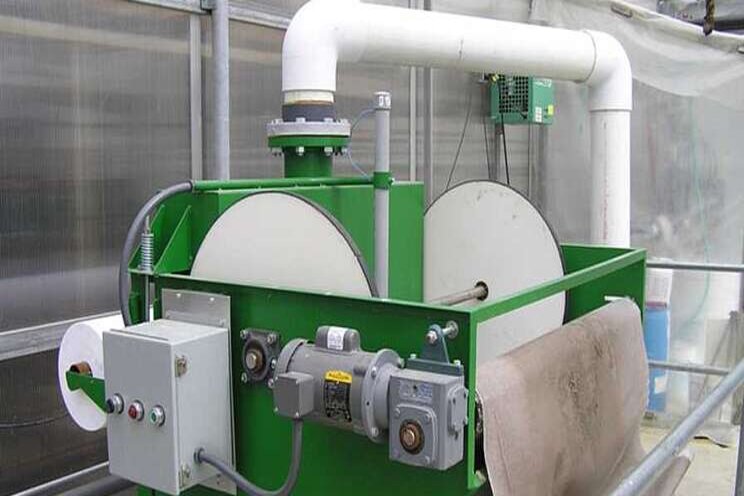3 Steps to ensure water quality for greenhouse crops
Added on 04 March 2020

1. Test the Quality of the Water Sources
Water sources differ in quality, so the treatment choice should aim to manage the parameters that pose a risk to crops or irrigation delivery systems. Chemical, microbial, and physical parameters determine the suitability of water for irrigation.
Growers should test the quality of the water source and then use the results of the analysis to help select or refine treatment options. Initial testing will be an indicator of potential problems. For more information about interpreting water quality tests, you can use the WaterQual web tool at CleanWater3.org/wqi.asp.
The quality of water can change unexpectedly. For example, drinking-water treatment facilities can increase the amount of fluoride or chlorine bleach up to 4 ppm — within EPA standards, but too high for most crops — without notifying the end user. Agrichemicals or nutrients can increase in surface water or ground water when agricultural runoff increases in water bodies that are connected to the water source. Plant growth regulators can leach into the solution and accumulate in the catchment tank. Therefore, growers should think about water treatment as a risk-management strategy and implement an approach that consistently monitors for potential risks (e.g., inline chlorine meter) or that has a continuous treatment point in place as a preventative mechanism (e.g., carbon filtration). The goal is to have a proactive approach — never a reactive one.
2. Match Treatment Options to Potential Problems
Multiple options are available to treat problems in water. Sanitizers tend to be the most difficult water treatment to select. The efficacy of sanitizers varies by organism (for more information about the efficacy of the sanitizer by target organism, go to Waterborne Solutions at Backpocketgrower.com/waterbornesolutions.asp). Sanitizers also differ in their residual activity or how much control they provide throughout the irrigation. Point treatments — i.e., ultraviolet (UV) light and heat treatment — control organisms when the solutions are in direct contact with the treatment system, and they leave no residues in the solution.
In contrast, injectable sanitizers continue to react throughout the irrigation. The residual activity of the injectable products varies by the inherent properties of each product and the concentration applied. The benefit of residual activity is sustained control throughout the system; the disadvantage is the risk of phytotoxicity when the product is applied at high doses or if it accumulates in closed-loop irrigation systems.
Phytotoxicity can be caused by spilling of concentrated sanitizers.
Photo by Rosa Raudales
We must always keep in mind that even though we are treating water, our main objective is to grow crops and to do it effectively. Water treatments are only one component of the production process, and any other practices that can help prevent problems are integral components of the overall system. That is to say, if we want to prevent diseases caused by waterborne pathogens, we should think of the water treatment as a strategy to help reduce the inoculum from the water. However, we still need to prevent the entry of pathogens from other sources (e.g., infected cuttings or liners), avoid conducive conditions that promote disease (e.g., overwatering), rotate fungicides, and use resistant cultivars, when available. Another instance would be to understand that while filters remove debris or agrochemicals from the solution, we should avoid littering the solutions.
3. Think About an Integrated System Design and Monitoring
Consult an agricultural engineer to help you finalize the design. A few general tips:
- Filter first, sanitize later. Organic debris in the solution will interfere with sanitization. Hence, filter out the debris before sanitizing.
- Storage tanks will slow down the water flow and reduce the size of the equipment needed to treat water. The contact time of the sanitizers with the solutions can be extended in storage tanks, reducing the need for a high concentration of sanitizers.
- Multiple-stage filtration is important. Growers abandon filters that clog too quickly. If they are clogging, they are capturing something. Install filters in series, from coarse to fine pores, to improve filtration efficiency and reduce the need of cleaning filters too often (if possible, use filters with automatic backwash).
- Monitor, monitor, monitor! A system will only be effective if it is functioning properly. Include sampling valves to take samples or inline meters to measure active ingredients. Train your staff on how to monitor and adjust the system.
Finally, make sure the technology is a right fit for your company. I always recommend that growers speak with other growers about how effective the systems are, the service the companies provide, and how easy it is to manage. Many growers like high technology options, but many prefer simplicity. Both options work, just make sure it works for your team.
Click here for more information.
Photo by Rosa Raudales
Source: Greenhouse Grower
More news















